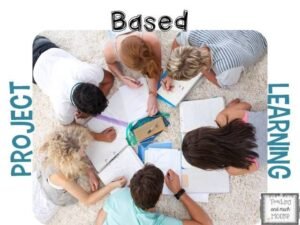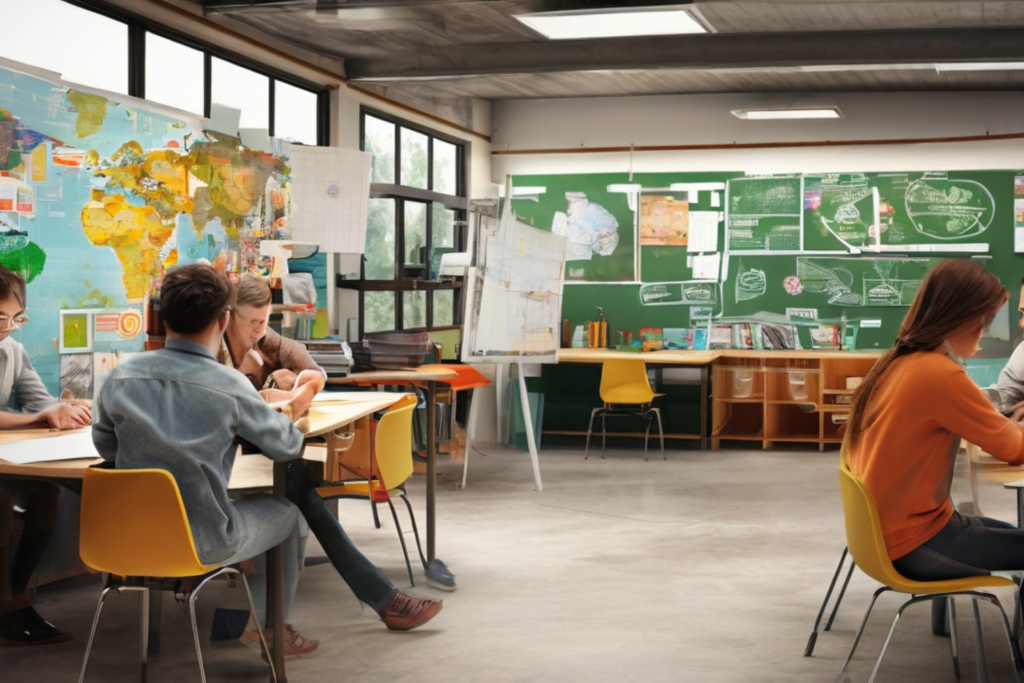Dynamic PBL, also called project-based learning is a new approach that is taking the learning world by storm, replacing traditional classroom instructions with the learning by doing method. This approach opens the possibility for students to participate in their learning process and helps them develop real life learning problems and theories into practice. Because PBL addresses collaboration, critical thinking, creativity, and other skills, the method improves student attainment while also helping learners be ready for future endeavors and opportunities.
Understanding Dynamic Project-Based Learning: Bridging Theory and Practice for Real-World Impact
Dynamic PBL as a method provides a strong resultant junction for the educational process, which unites theory and practice. Thus, the practice-oriented, highly relevant tasks that are solved, students improve critical thinking, interact with ideas comprehensively. It enhances the prospects for knowledge application to practice as well as enforces retention because of the practical aspect of the learning process.
In PBL, students are taken out of their conformist practices, engage, solve problems and work in groups. This approach fosters dynamic participation and thus readiness to confronting situations as they are in real life. Since PBL links the theoretical and the practical, students acquire certain skills to become proficient professionals as they progress through school.
Dynamic Project-Based Learning: Bridging Theory to Practice Through Real-World Application
Dynamic PBL can be called an effective teaching method, which focuses on the utilization of ชนะ the presented basically concepts. This approach enables learners to apply concrete solutions to problems in projects selected for the students so that the ideas taught can be effectively implemented. Apart from promoting comprehension, such linkages help the students to develop the perception of real-life application of the materials learned.
They suggest that developing critical thinking‑problem solving skills should occupy an important place in education today. Through Dynamic Project-Based Learning, students are forced to critically think about the problems facing them and develop the best approaches to solving them. Structurally this approach of teaching is dynamic to help learners hone their critical thinking skills so that they can handle all sorts of challenges in various domains from academic work to personal lives.
Also, increasing students’ interest and motivation is one of the primary values of this type of education. The curriculum makes students active learners by associating the various projects with real-life cases. Explaining this learner-focused method Edutopia states that learners’ constructed knowledge makes the classroom environment more inspiring, motivating, engaging, and enjoyable, thus helping to turn learning into a more valuable process.

Dynamic Project-Based Learning: Fostering Collaboration, Leadership, and Technology Integration
Dynamic PBL focuses on student interactions and actions, skills enabling students or learners to solve real and complex project-related problems and issues. In their cooperative work, students master century skills necessary for effective communication and presentation of ideas and points of view. Thus, it enables learners give their opinions and choices to some extent, and to some extent, this fosters a feeling of ownership hence engagement.
Incorporation of technology to dynamic learning projects is also an added advantage to the education. Students are able to organise their tasks and work cooperatively, as well as design quick and efficient assembly, aided by the use of a range of available digital tools to prepare their presentation. These incorporations help foster leadership and soft skills so that they are ready for the workplace. Thus, the focusing of the Dynamic Project-Based Learning approach on these elements prepares students to cope with the modern developments.
Dynamic Project-Based Learning: Assessing Outcomes and Overcoming Challenges for Future Education
Evaluation of students’ learning is crucial in making decisions about the application of Dynamic Project-Based Learning. This is a learning strategy teaching where the center is on the ideas of applying the learning to actual life situations. Through defining success with project completion and students’ activity, the educators can analyze the efficiency of the knowledge and skills acquisition as well as the value of projects as meaningful activities for students.
To optimise the possibilities of PBL, the difficulties in practice-application of theory should be effectively addressed. Challenges are then experienced particularly by students in an attempt to establish link of theories to practice. Therefore, by empowering students with support for ownership of the projects that they shall be undertaking, the educators shall assist the students in building both their confidence levels. This empowers the learners to be in control with their learning process, together with allowing them to handle difficulties in their learning process.
Last but not least, education of the future is in achieving Dynamic Project-Based Learning as a revolutionary approach to teaching. Teachers should evaluate success and failure in order to do away with obstacles and promote the enhancement of learning. This new model supports student success by offering them required and desired skills and knowledge as well as building confidence in dealing with an uncertain future, which helps form the leaders of tomorrow.


